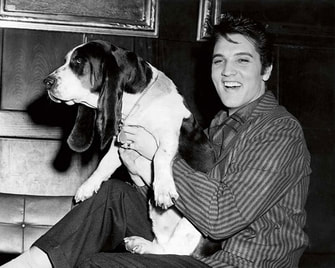 As promised, we’re back with more facts over fear for using essential oils (EO) with the animals in your lives. Again, the importance of using the highest quality, organic, therapeutic-grade essential oils cannot be overstated. Within 20 minutes of topical application, inhalation or ingestion, the compounds within the EO can be found in every cell in your body, including the brain. High-quality oils enhance health, low-quality oils (non-organic and/or chemically-based) detract from it and give your body “one more toxin” to have to try and process. As noted in the first well-oiled pets post (click here), the easiest way to introduce your animals to oils is by wearing them around your pets or through cool-air diffusion as these two methods allow your critters to get familiar with new scents and provide an exposure that is low and slow. Even with this method, your animal may not be receptive to the scent of an oil. If this happens, you have options. First, you can try mixing the EO with something that they do like and see how they respond. You can also diffuse the oil for a day or two to provide time to adjust to the scent. Additionally, you can dilute it with a carrier oil. Remember, most animals have a much stronger sense of smell than their human family members! Plus, their sizes can vary greatly so we just need to be mindful when using with our non-human loved ones. While overuse of oils is not typically toxic or dangerous, it can start a detoxification process that may appear intense and can leave you feeling like something is wrong with your pet…When I studied herbology, we called this the ‘healing crisis.’ Things often look worse before getting better because the body is clearing out to reboot and restore. Please note: true reactions can happen if an EO contains low-quality oils and/or something synthetic. According to the Essential Oils Animal Desk Reference: Essential oils have been known to digest toxic substances; so when they come in contact with chemical residue on the skin, the oils start to work against them. It’s important to eliminate any synthetic products, if possible, when using essential oils around animals. Our canine companions, unfortunately, are often heavily exposed to toxins in shampoos, flea/tick treatments, routine immunizations, medications, etc., and require some detoxification so it is better to start with the lower exposures to EO mentioned above. Another way to enhance your pet’s health and wellbeing, as well as reduce chances of deep detox for your pet, is to avoid products containing ammonium or hydrocarbon-based chemicals which contain quaternary compounds like quaternariums and polyquaternariums which can be fatal if ingested. Of special note is benzalkonium chloride which is used in many products, even those marketed for pets. This one can be fatal! Additional compounds that pose a toxic threat to our animal friends include:
The last three noted above can react with some compounds inherent in EO and result in skin irritations (also true of humans that use personal care and beauty products that contain these chemicals and then use EO). The concern with these toxins, however, goes much deeper than skin reactions. The chemicals are actually stored in the animals’ (and our) fatty tissues where they are able to leach into the body. Topical application of EO can pull them out of the system which can be uncomfortable. So, again, focus on low and slow exposure when starting with EO. While this all sounds scary, because it is, it points to the benefits of “going clean” with your pets and how detox can help them long-term. Beyond skin irritations, a more intense detox may leave your pet with an upset belly or generally feeling “blah.” (If you’ve ever done a juice cleanse or other detox, you’re probably familiar with the “slump” before the “wow” as the body clears things out and then gets the boost). You can make this process easier by:
Of course, you can stop using the oils for a few days and make sure you’ve reduced/eliminated their exposure to chemicals and start again focusing on “low and slow” – less oils, less quantity and less exposure built up over time. I know one of the first oils I introduced to my dog was Peppermint. He’s still not a fan of the scent which is intense for a being whose sense of smell could be a 1,000 times more powerful than mine…so we started with a drop rubbed into my palms (complete with me waving my hands in the air for a second to help diffuse it) and then me simply sitting beside him for a bit. While we still play hide and seek under the kitchen table with some EO and blends (Thieves, for example), he’s great with me adding a drop of Lemon Vitality to his bowl of water every day and enjoying a healthy lifestyle as a well-oiled pet. FYI: Young Living’s Animal Scents line is specifically designed with your critters in mind so if you’re ready to get started, head here first. As we continue this journey, we’ll explore quantities/percentages for use, usage tips and so much more. Of course, you can forward comments or questions to [email protected]. Thank you and have a great day! Image Source: Bored Panda
0 Comments
Leave a Reply. |
author
I'm Mary Ann. I am a storyteller using skills, interests, education and experience to help others. Together, we'll explore your story and write a new ending for your journey along the nourished path. Categories
All
archives
June 2024
|

 RSS Feed
RSS Feed